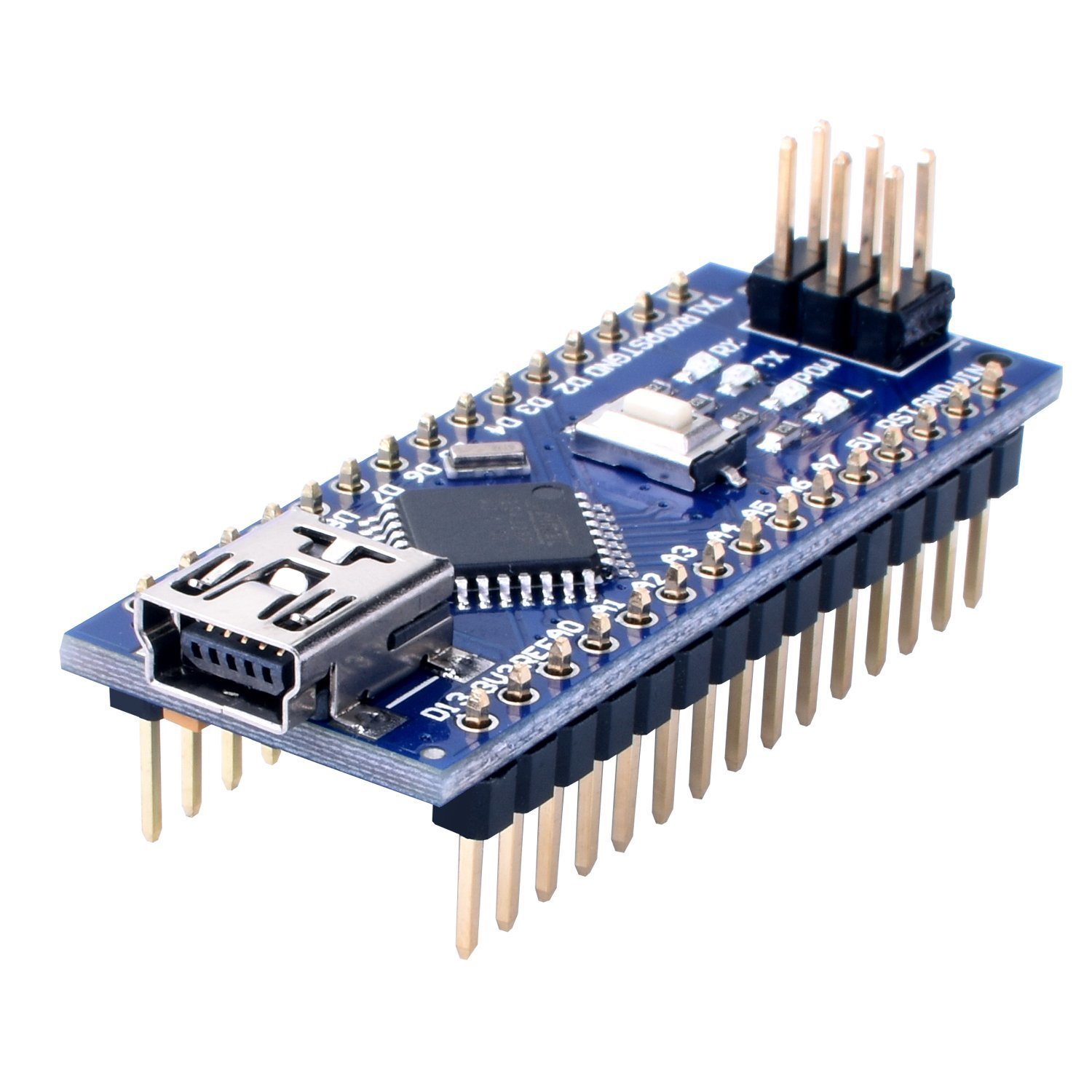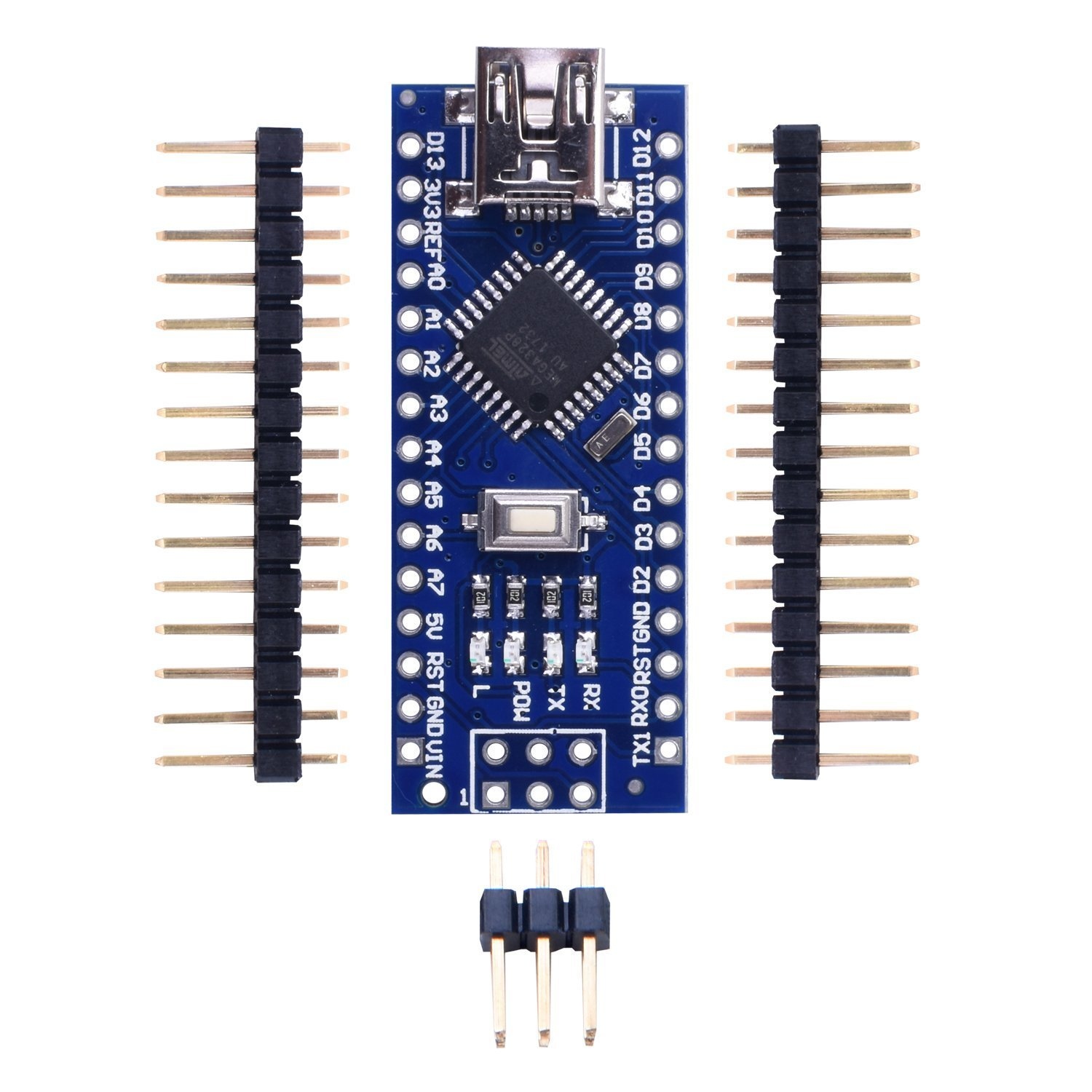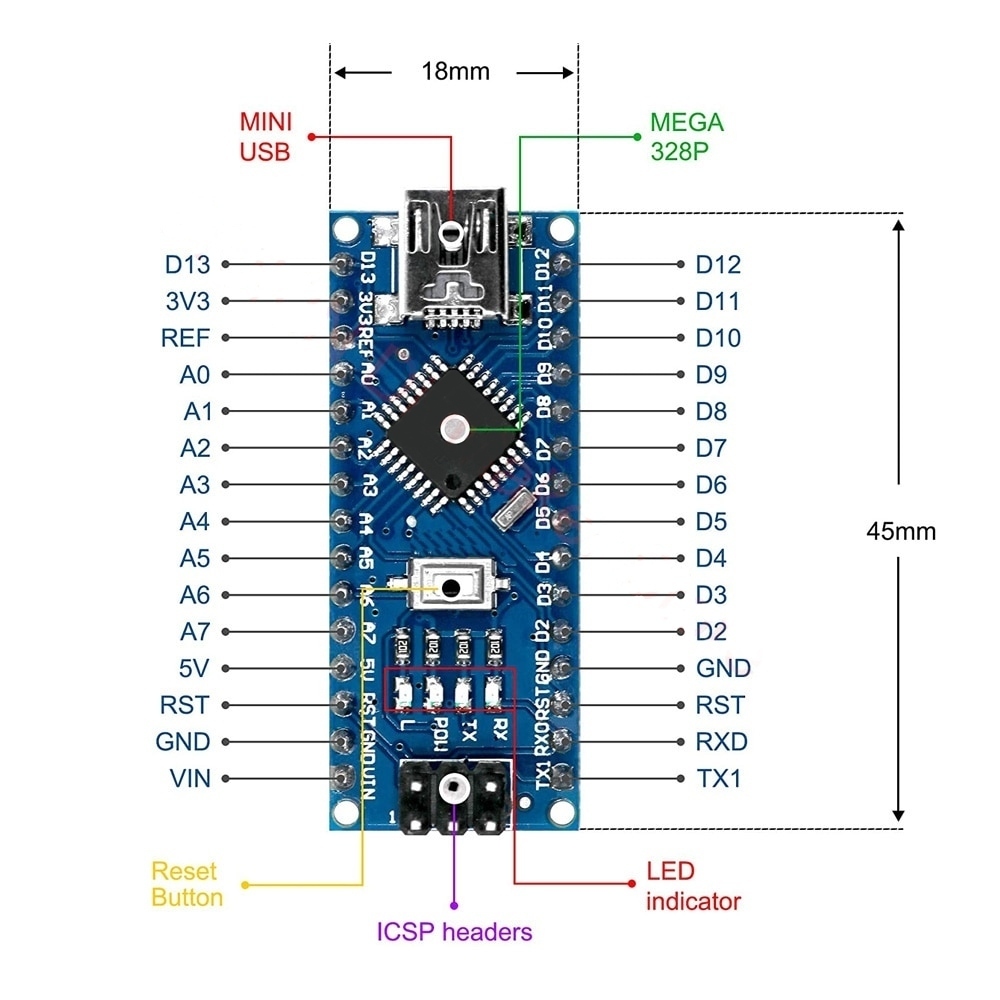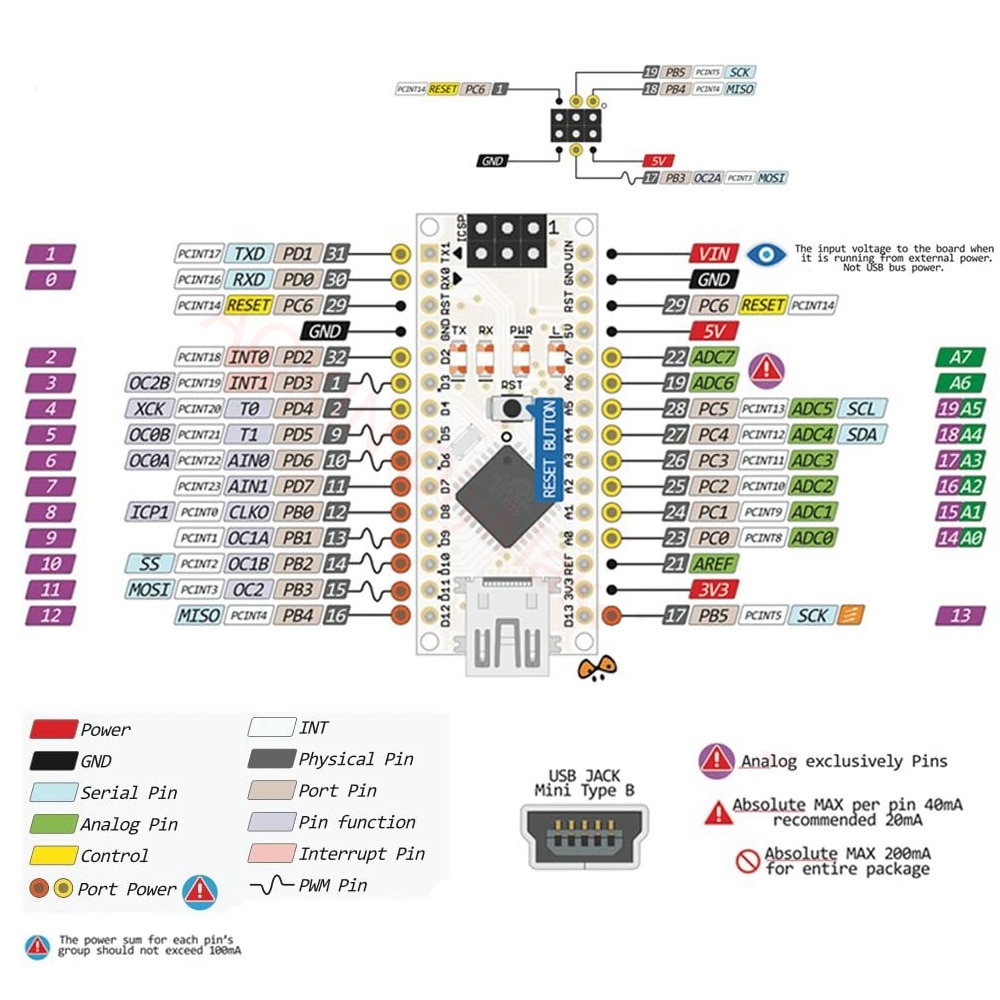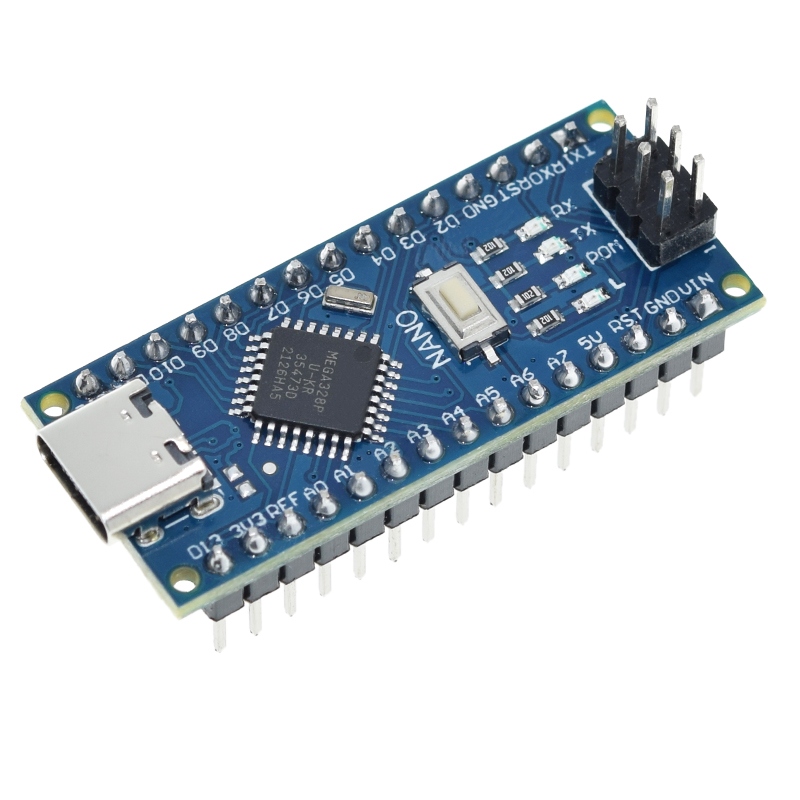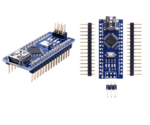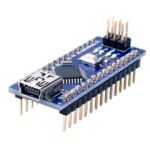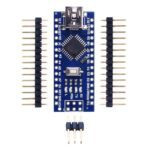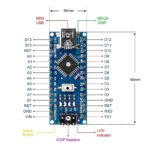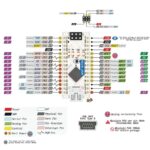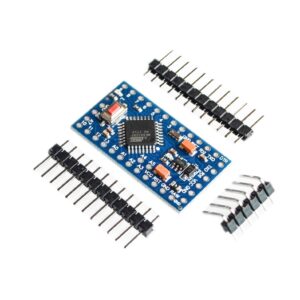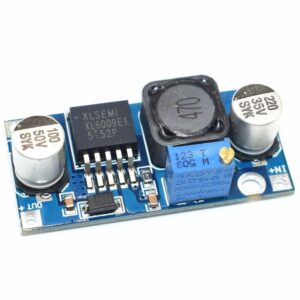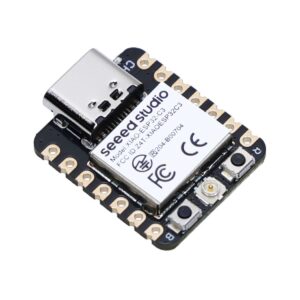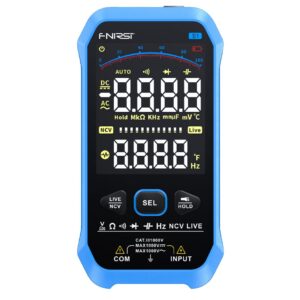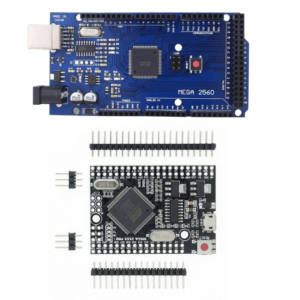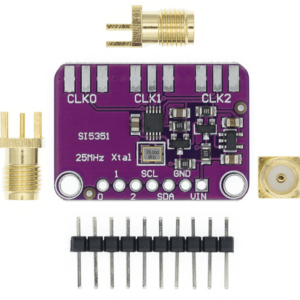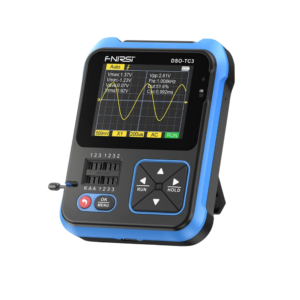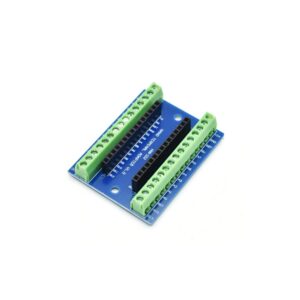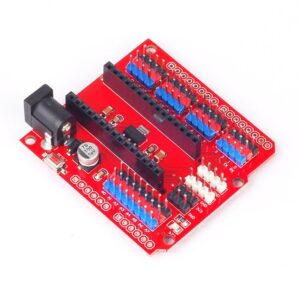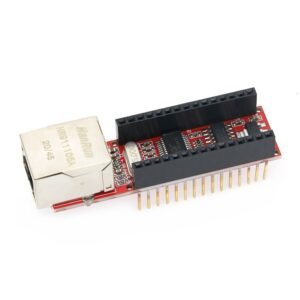Arduino Nano V3.0 (Compatible) Board The Key Features:
- Compact Design: With its breadboard-friendly architecture, this board is a dream for hobbyists and professionals alike.
- Powerful Microcontroller: At its heart lies the ATmega328P microcontroller, ensuring smooth and efficient performance.
- Versatile Connectivity: Whether you’re using a mini USB cable or an external power supply, this board has got you covered. And with no DC jack, it’s sleeker than ever!
- Arduino Compatibility: Seamlessly integrate with Arduino for endless possibilities in electronics development.
- Multiple Packages: Choose from various packages tailored to your needs, each including different quantities of the board and USB cables.
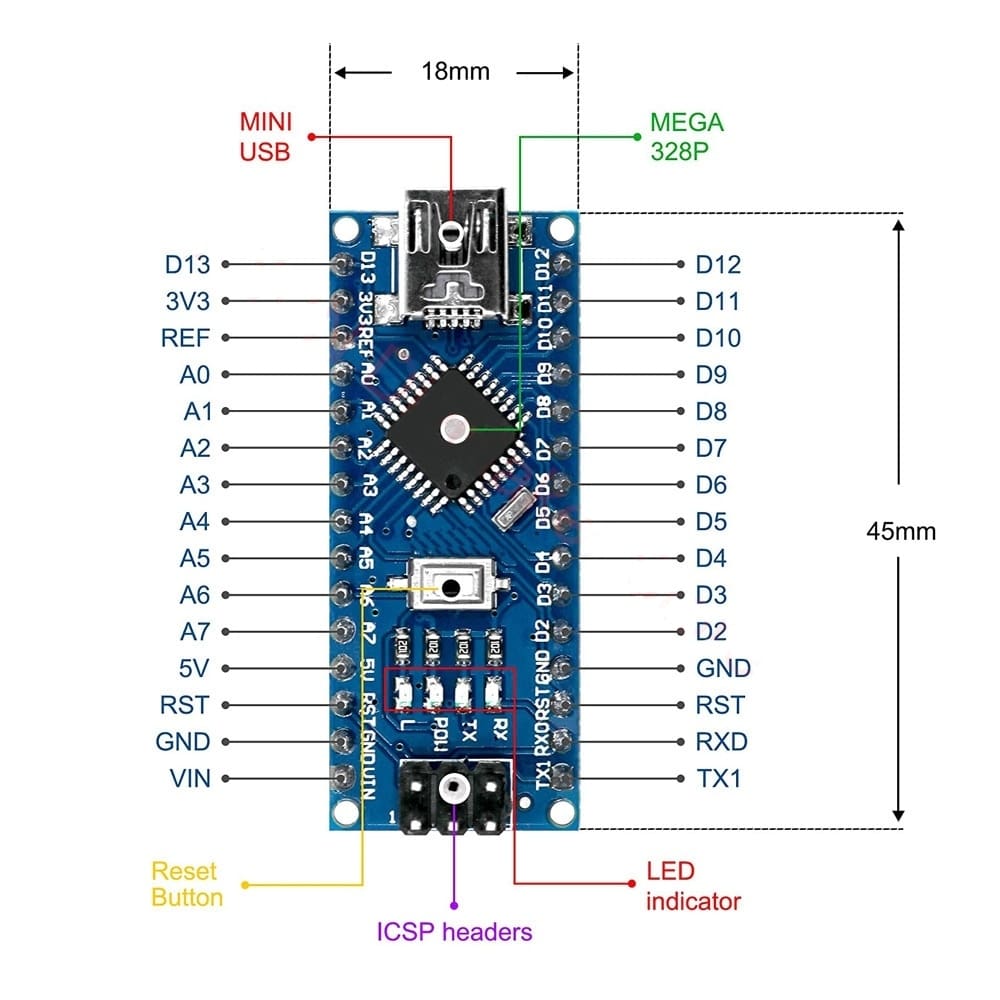
Specifications of the Arduino Nano V3.0 Microcontroller:
- Microcontroller: Atmel Atmega328P-AU MCU
- Architecture: AVR
- Operating Voltage: 5 V
- Recommended Input Voltage: 7-12 V
- Input Voltage Limits: 6-20 V
- Digital I/O Pins: 14 (6 with PWM output)
- Analogue Input Pins: 8
- DC Current per I/O Pin: 40 mA
- Flash Memory: 32 KB (2 KB used by bootloader)
- SRAM: 2 KB
- EEPROM: 1 KB
- Power Consumption: 19 mA
- Clock Speed: 16 MHz
- Weight: 7 g
- Chipset: ATMEGA328P
- PCB Size: 18 x 45 mm
Additional Features:
- USB download and power support
- External 5V ~ 12V DC power supply compatibility
- 9V battery power supply option
- ISP download support
Arduino Nano V3 How to Load a Sketch
FAQ
What is the use of Arduino Nano?
The Arduino Nano is a compact and versatile microcontroller board, ideal for prototyping and creating custom devices. Based on the ATmega328, it’s especially suitable for developing new applications and software due to its breadboard-friendly design.
Can Arduino Nano replace Arduino Uno?
Yes, the Arduino Nano can often replace the Arduino Uno in many projects. While both use the ATmega328 microcontroller and share similar capabilities, the Nano’s smaller, more compact size makes it preferable for space-constrained applications. It uses a mini USB port, unlike the Uno’s regular USB.
Both operate at 5V, have a 40mA current rating, and run at 16MHz. The Nano’s breadboard-friendly design is a plus, but beginners might find the Uno more user-friendly, especially due to its replaceable processor and compatibility with various shields.
The choice between Nano and Uno largely depends on the project’s specific needs and the user’s experience level.
Is Arduino Nano as powerful as Uno?
Yes, the Arduino Nano is essentially as powerful as the Arduino Uno. Both boards use the ATmega328P microcontroller and share key specifications: they operate at 5V, have a 40mA current rating, and run at a clock frequency of 16MHz.
The main difference is size, with the Nano being more compact, making it ideal for space-limited projects. In terms of processing power and basic functionality, they are very similar.
Can Arduino Nano run without computer?
Yes, the Arduino Nano can operate independently without a computer. It can be powered through a Mini-B USB connection, an external power supply ranging from 6 to 20V (unregulated), or a 5V regulated external power supply.
After programming, the Nano can function on its own, which is ideal for embedded applications, standalone projects, and integration into various electronic devices.
Is Arduino Nano better than Micro?
The choice between the Arduino Nano and Arduino Micro depends on the project’s needs. The Nano, with its ATmega328P microcontroller, 22 digital pins, and 8 analog pins, is great for basic to intermediate projects, especially where space is limited. It’s compact and breadboard-friendly. The Micro, smaller than the Nano, has a more powerful ATmega32U4 processor, 20 digital I/O pins, 12 analog input pins, and native USB support, making it ideal for advanced projects requiring USB connectivity.
In summary, use the Nano for simpler, space-sensitive projects, and choose the Micro for more complex applications needing a stronger processor and USB integration.
Can Arduino Nano run on 12V?
Yes, the Arduino Nano can operate with a 12V power supply, but it’s advisable to use a 5V DC-DC converter for powering the Nano through the 5V pin. This approach enhances efficiency and minimizes the risk of damaging the board.
While the Nano can accept 12V through the Vin pin, opting for a 5V regulated external power supply or a DC-DC converter is safer and more effective. It’s crucial to exercise caution when using 12V to power the Arduino Nano to avoid damage and maintain proper functionality.
Why choose Arduino Nano?
The Arduino Nano is a popular choice for its compact size, making it perfect for tight spaces and prototyping. Its functionality mirrors larger Arduino boards, and its breadboard-friendly design simplifies prototyping. The Nano finds use in various applications, such as medical instruments, industrial automation, Android applications, virtual reality, and real-time face detection.
It’s cost-effective, user-friendly, and ideal for home automation, DIY electronics, and instrumentation. Favoured by students, hobbyists, and professionals, the Nano’s small size, affordability, and ease of use stand out.
In summary, the Arduino Nano is chosen for its size, affordability, versatility, and ease of use, appealing to a broad range of users from beginners to advanced enthusiasts.


